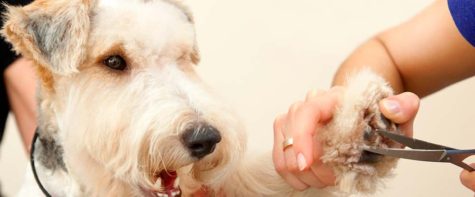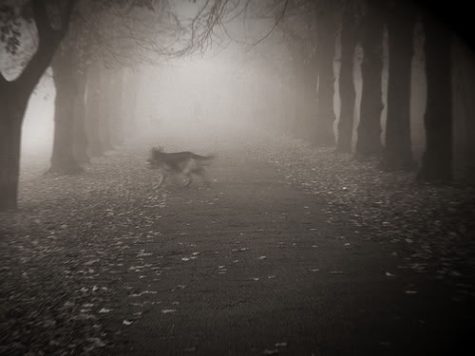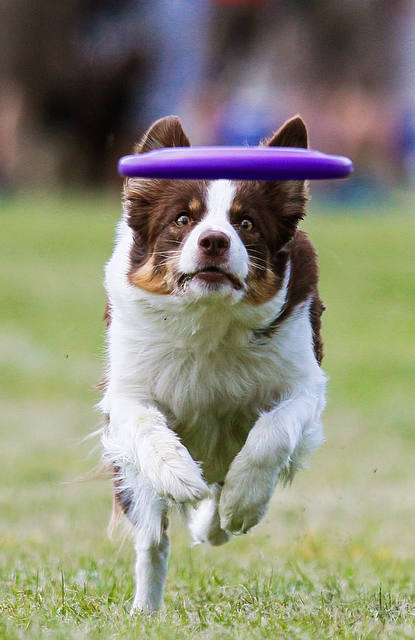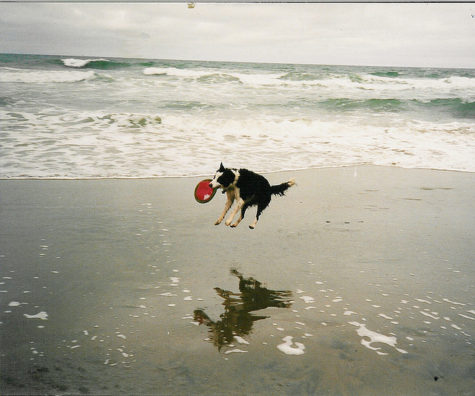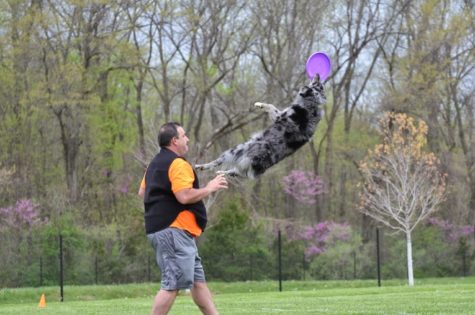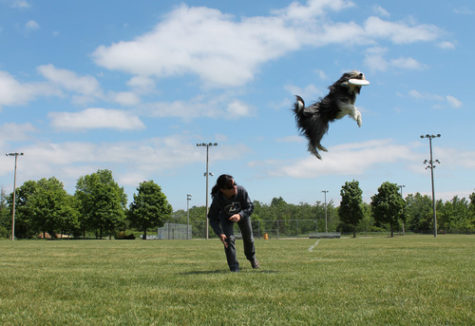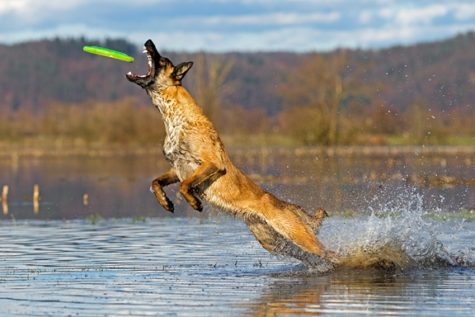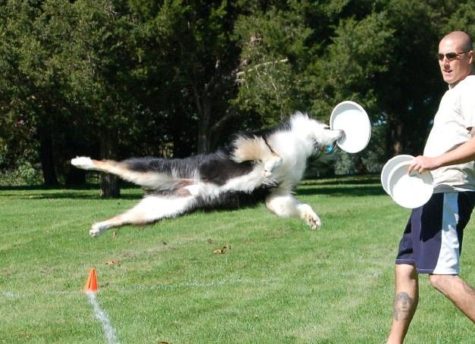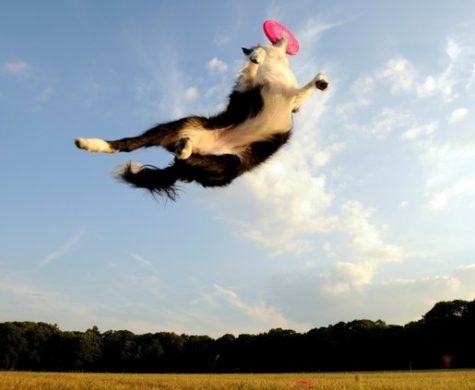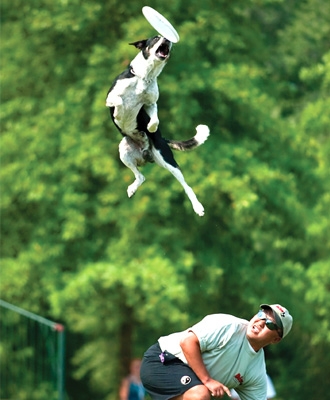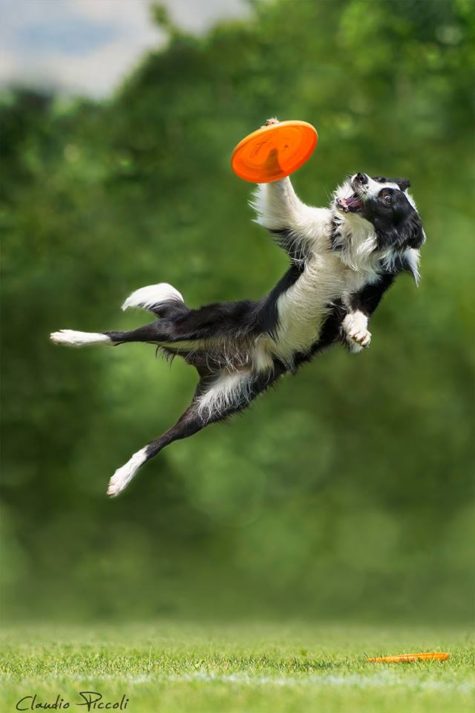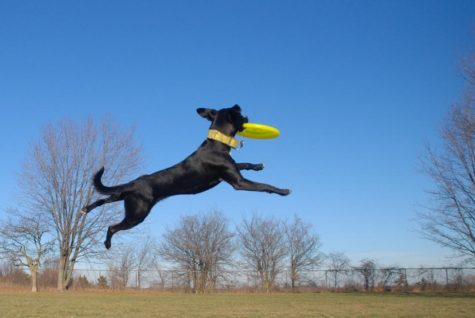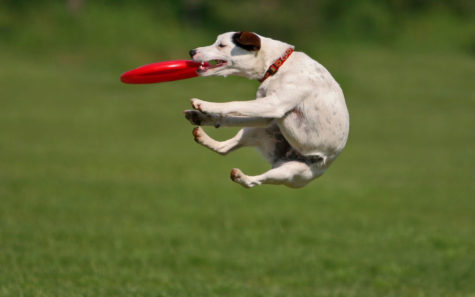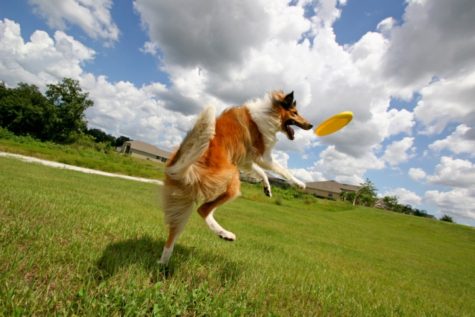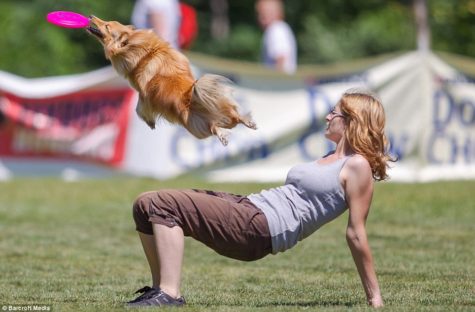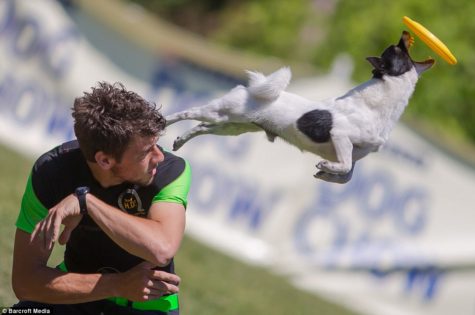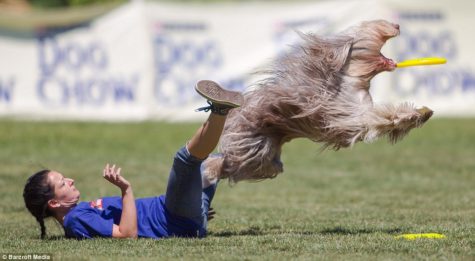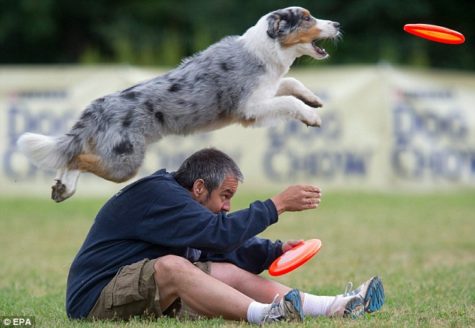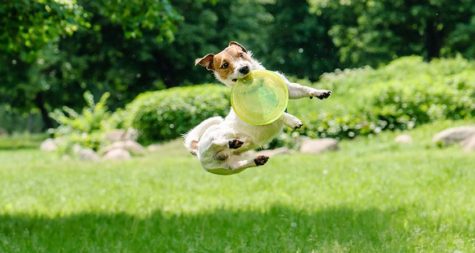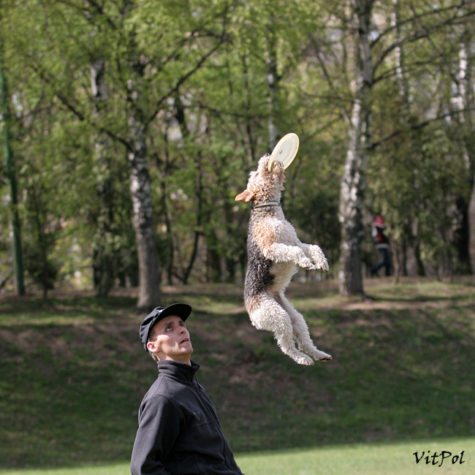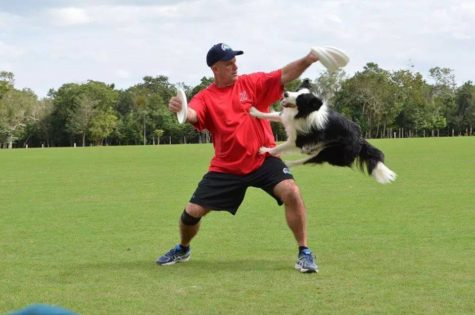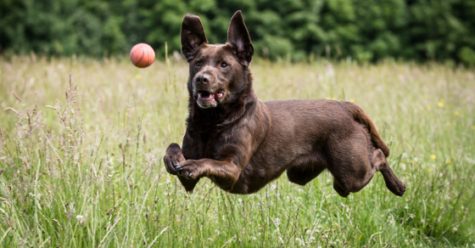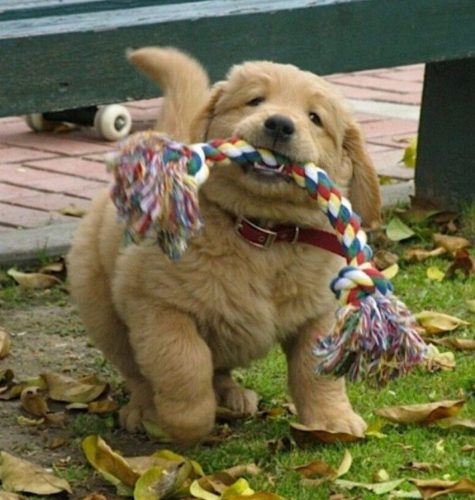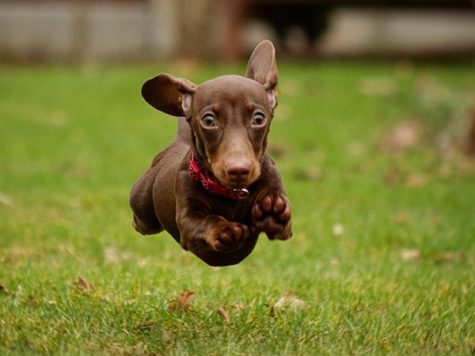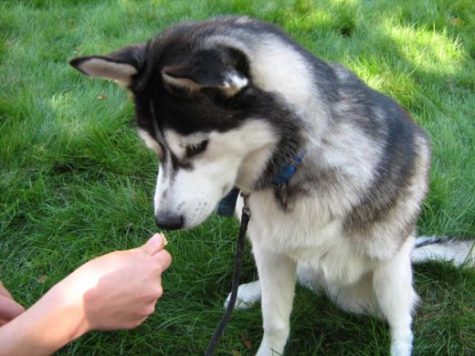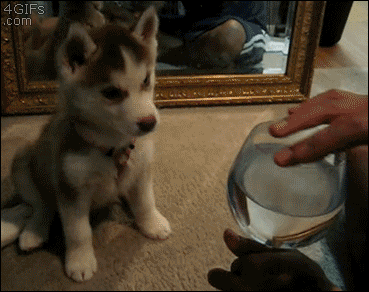Monthly Archives: April 2017
Why Grooming Is Important
The physical appearance of your dog influences not just the way your dog feels, it affects his (or her) interactions with his human family as well. After all, who wants to snuggle with a dirty smelly dog? Excessively matted hair, tangles and dirt, do not feel good to your dog either. Believe it or not, a clean dog is a happier, healthier dog.
Here are 8 reasons to keep your dog clean and well groomed:
- Regular bathing keeps your dog healthy it eliminates the germs and dirt your dog picked from playing outside. A clean dog equals a healthy dog.
- A clean pet feels more comfortable. Bathing with a rich lather using a good dog shampoo will remove dander and fleas from your pet’s skin.
- Keeping your dog’s toenails trimmed is important. Trimming your dog’s nails will prevent the germs from accumulating inside of them. Also, trimmed nails will prevent scratches if your dog jumps on you and keeps your furniture safe.
- Brushing your dog’s hair regularly will keep it shiny and tangle free. If you have a long-haired dog, you may need to cut it or have it clipped occasionally to keep him looking nice and neat. Hair that becomes densely matted will harbor moisture and can cause sores and ulcers on the skin under the matted hair.
- Keeping the hair short around his eyes will give him a better view. A dog that can’t see is more likely to nip and bite.
- Some dogs grow hair in their ears that needs to be pulled out periodically. If the ears are not cleaned, or if dirty clumps of thick hair remain in the ears it can cause problems such as ear infections and hearing loss.
- Boost his energy. Clean dog means a happy dog. Just like a human, your pet needs to be cleaned to awaken his senses after having a good wash. Proper grooming is just like rejuvenating his confidence, giving him the energy to enjoy any and all activities that await him.
- A well-groomed pet is much easier to love. Of course, a responsible pet owner doesn’t want his dog to be dirty. A clean and healthy dog is very nice to look at. Others will also appreciate all the proper care that you give your pet.
by Andrei Smith
Superstitions About Dogs
We’ve all heard that a black cat crossing your path brings bad luck, but have you ever heard the following?
- A dog eating grass means rain is coming.
- Meeting a dog is good luck (especially if it’s a Dalmatian).
- A greyhound with a white spot on its forehead brngs good fortune.
- Being followed by a strange dog is bad luck (especially if the dog is black).
- The spectral black dog (barguest) is a harbinger of death.
- A dog howling for no reason means unseen spirits are lurking about.
- A dog howling three times? A death has occurred.
- At one time a dog that had bitten someone was immediately destroyed to protect the person from rabies (even if the dog was healthy).
Photo by Jane W
Frisbee Dogs
A tired dog is a sleepy dog is a good dog. Here is a great collection of some awesome Frisbee dog photographs. Hopefully they will get you motivated to teach your dog “Get it” and “Give” and get the two of you outside and having fun together.
Tossing a Frisbee not your cup of tea? Dogs like to play ball too!
Teaching Give
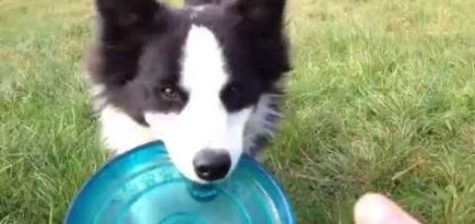 What it means:
What it means:
Put what you have in your mouth into my hand, right now.
Verbal command – “Give”
Tone of voice – Firm, no nonsense
Hand signal – Hand out, palm up
Body Language:
Confident, self assured
Enforcing the command:
Have your puppy on leash, sitting or standing next to you. In your right hand have something (treat or toy) that your puppy is interested in. Toss the item out in front of your puppy. As you toss it, give the command “Get it!”.
How far?
In the beginning, don’t send your puppy out farther than 6 feet or so. As soon as your puppy begins to understand, you can begin to increase the distance.
Do’s and Don’ts:
GO OVERBOARD WITH PRAISE, especially in the beginning. This should be FUN. Motivation will be the key to willing compliance. If your puppy seems unsure, let him sniff the treat or get excited about the toy. The item you use MUST be something your puppy wants.
What your puppy learns:
Cooperation in the context of a game. This command can be used as a reward for good obedience, and lays the foundation for retrieving, tricks, and also helps teach your puppy that active obedience can be fun and rewarding. It also helps to instill greater focus on you, the owner, and is a great way to bond with your puppy.
Written by: Shirley Gibson
Note:
You are welcome to share this post but ONLY IF you give credit and a link back to Teach Your Dog To Behave or shirleytwofeathers.com.
Teaching Get It
What it means:
Run quickly, and get that thing..
Verbal command – “Get it!” or “Fetch”
Tone of voice – Encouraging, exciting
Hand signal – Point in the appropriate direction
Body Language:
Excited, happy.
Enforcing the command:
Have your puppy on leash, sitting or standing next to you. In your right hand have something (treat or toy) that your puppy is interested in. Toss the item out in front of your puppy. As you toss it, give the command “Get it!”.
How far?
In the beginning, don’t send your puppy out farther than 6 feet or so. As soon as your puppy begins to understand, you can begin to increase the distance.
Do’s and Don’ts:
GO OVERBOARD WITH PRAISE, especially in the beginning. This should be FUN. Motivation will be the key to willing compliance. If your puppy seems unsure, let him sniff the treat or get excited about the toy. The item you use MUST be something your puppy wants.
What your puppy learns:
Cooperation in the context of a game. This command can be used as a reward for good obedience, and lays the foundation for retrieving, tricks, and also helps teach your puppy that active obedience can be fun and rewarding. It also helps to instill greater focus on you, the owner, and is a great way to bond with your puppy.
Written by: Shirley Gibson
Note:
You are welcome to share this post but ONLY IF you give credit and a link back to Teach Your Dog To Behave or shirleytwofeathers.com.
Teaching Your Puppy to Come When Called
This is one of the most important commands your puppy will learn and one day could save your puppy’s life. It is well worth the time and effort required to teach it.
What it means:
Come here to me right now.
Verbal command – “your puppy’s name COME!”
Tone of voice – Friendly, Enthusiastic, Welcoming
Hand signal – none
Body Language:
Crouch down, lean forward, look inviting, encouraging, even playful. Remember to smile!
Enforcing the command:
When teaching this command be sure to always have your puppy on leash. If the puppy is highly distracted and pays no attention, or comes very slowly, give the leash a quick pop – just enough to get the puppy started in your direction, then use your voice and body language to bring your puppy in. For a very lazy or stubborn puppy, you may have to use a rather sharp tug on the leash to get your puppy up and moving in your direction.
Alternatively, you could turn and run the other way (with the leash in your hand). Stop running as soon as the puppy is headed your way.
Do’s and Don’ts:
Always use a positive tone of voice. This should be an enjoyable command for your puppy. All your body movements should be inviting. Give treats and rewards when your puppy comes. If correction is needed, remember to say “NO!” when pulling on the leash.
Avoid pulling your puppy all the way to you, or reeling him in like a fish. It’s better to give a sharp tug on the leash followed by a friendly voice, and then another sharp tug (if needed) followed always by friendliness. If you want your puppy to make the decision to come to you willingly, he must be given a chance to come of his own accord.
What your puppy learns:
To respond to his name. Teaches him to look to you for leadership, love, and all good things. Also begins to establish the necessary groundwork for a reliable “come when called no matter what”.
Written by: Shirley Gibson
Note:
You are welcome to share this post but ONLY IF you give credit and a link back to Teach Your Dog To Behave or shirleytwofeathers.com.
Teaching The Name
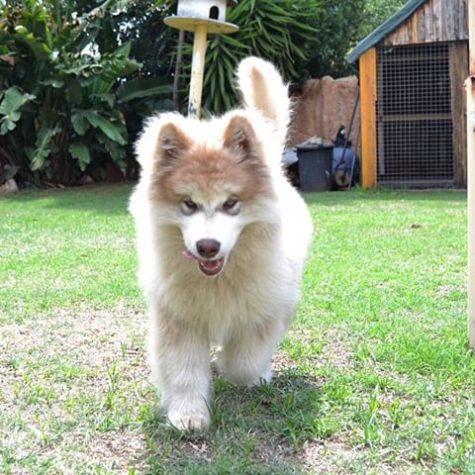 What it means:
What it means:
I want your attention. I have something to tell you, show you, and/or give you.
Verbal command – “Your Puppy’s Name”
Tone of voice – Friendly, Enthusiastic
Hand signal – none
Body Language:
Friendly and inviting.
Enforcing the command:
When conditioning your puppy to this command (the first week) be sure to always have a food reward or beloved toy when saying the name. After the conditioning has been completed, inattention can be corrected using a shake can (or other loud startling noise). A quick pop on the leash is also an effective way to get your puppy’s attention. As soon as your puppy looks at you, praise him, be happy with him, and then say, show, or give whatever it was you had in mind initially.
Do’s and Don’ts:
Keep the treats out of sight (except for the first few days). Holding the treat behind your back is a good way to keep it out of sight. Give the treat AFTER the puppy has given the desired response rather than as bait to obtain the response.
Use your puppy’s name only when something good will happen. Do not use your puppy’s name in connection with a correction, or in a demanding, angry tone of voice. If correcting is needed, you can say “Bad Puppy!” or “Shame On You” or “No!”
Praise your puppy with enthusiasm whenever he responds to his name.
What your puppy learns:
That his name is his own special word, teaches him to look to you for leadership, love, and all good things. Also helps to establish the necessary groundwork for a reliable “Come” when called.
Written by: Shirley Gibson
Note:
You are welcome to share this post but ONLY IF you give credit and a link back to Teach Your Dog To Behave or shirleytwofeathers.com.
Teaching Your Puppy to Drop It
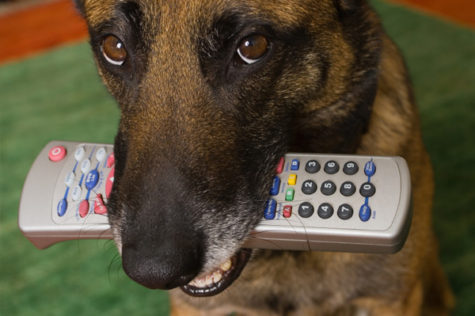 What it means:
What it means:
Spit that out of your mouth this instant, and never pick it up again.
Verbal command – “Drop It!”
Tone of voice – Sharp, firm, demanding
Hand signal – none
Body Language:
When teaching this command, have your puppy on leash. You can either sit or stand, but try to keep a low profile, you want your puppy to forget you are watching.
Enforcing the command:
As soon as the puppy picks up the item, say the command “Drop It!” in a sharp tone of voice. If your puppy does not spit the item out, or tries to run off with it, repeat the command “Drop It” in a louder, somewhat startling and more demanding tone, and at the same time give the leash a sharp jerk. If the leash correction isn’t sufficient to induce the puppy to drop the item, pull it from the puppy’s mouth, put it back on the floor, and wait to see if the puppy will pick it up again. If he does, repeat the correction, each time with a sharper tone and a stronger pop on the leash.
Do’s and Don’ts:
Do leave the item out where the puppy can see it and has access to it (under your direct supervision only). This will give you plenty of chances to reinforce this command.
Do not put the item out of reach until the puppy has decided not to pick it up again. Do not allow your puppy to run off with and keep the item.
Use this command ONLY with items you never want your puppy to have in his mouth. Do not use this command with toys or items that are sometimes OK to play with.
What your puppy learns:
Self control, and that everything in the world is NOT for the taking. This command also strongly reinforces your position of leadership in the relationship.
Written by: Shirley Gibson
Note:
You are welcome to share this post but ONLY IF you give credit and a link back to Teach Your Dog To Behave or shirleytwofeathers.com.
A Training Game
Here is a fun and useful “training” game you can play with your puppy. This game will reinforce (and teach) the following commands:
Sit * Stay * Sniff it * Find it * Come * No
You will need a willing puppy, a leash and collar, and a handful of yummy puppy biscuits, or other treats.
Begin by placing your puppy in a Sit / Stay. As soon as your puppy is settled, hold a biscuit in front of your puppy’s nose, saying Sniff It. Your puppy may grab for the treat, so hold it tight. If your puppy lunges for the treat, say NO, reinforce the Sit / Stay command, then repeat Sniff It. You might be able to see your puppy’s nose wiggle as he sniffs.
Place the treat on the floor where your puppy can see it. Insist that your puppy stay properly seated for a count of 10. Then, with an excited tone of voice, release your puppy from the Sit / Stay saying: OK! Find it! As soon as your puppy finds it, call your puppy to Come, praise your puppy, and then do it all over again.
A favorite toy can be substituted for a treat, but only if your puppy is highly motivated to find, get, and play with the toy.
Important:
During the teaching phase, the treat must be in plain sight and super easy to find. If your puppy seems confused, or has any trouble finding the treat, you must help him find it. Do several simple repetitions. As soon as your puppy understands the concept, begin gradually to increase the difficulty by hiding the treat in other rooms, or out of sight.
Note:
You are welcome to share this post but ONLY IF you give credit and a link back to Teach Your Dog To Behave or shirleytwofeathers.com.
Teaching Your Puppy to Lie Down
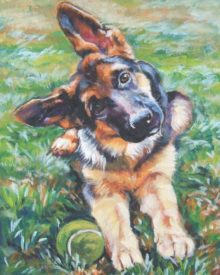 What it means:
What it means:
Lie down, right here, right away.
- Verbal Command: “Down”
- Tone of voice: Downward tone, somewhat commanding
- Hand Signal: Right hand palm down, moving in a downward motion
How to:
Start with your puppy in a sit at your left side. Bend over or kneel down next to the puppy. With your left hand reach over the top of your puppy and grasp his left front leg, and with your right hand grasp his right front leg. Then gently pull his front feet out from under him.
If he resists, use your left hand (or for large puppies – left forearm) to exert pressure on his shoulders. The instant that he begins to lie down, release the pressure on his shoulders and let go of his feet. If your puppy breaks out of the “sit,” put him back into a sitting position and continue placing him in the “down.”
Do’s and Don’ts:
Everything for the “down” command goes down, your voice, the leash correction, the puppy. As long as the puppy is in the “down” position, the leash should be down. Do not inadvertently pull up on the leash, or put any pressure on the leash while the puppy is in the “down” position.
If your puppy is lying down behind or in back of you, he may be feeling intimidated by the command. Just slide him back into position next to you, and try not to loom. Be patient, maintain a sense of humor, do not lose your temper, but persist until the puppy has obeyed.
As soon as the puppy is lying down, stand up and be casual, as if you knew all along that he would comply with the command. Do not loom or lean over the puppy. Avoid using a dominant posture to coerce your puppy into staying “down.” You want your puppy to stay in position because he decided to, not because he sees that you are watching. Avoid eye contact, and don’t pet the puppy until after he has been released from the “down” command.
Don’t push down on your puppy’s back, or smash down hard on his shoulders. Gentle pressure on the shoulders along with pulling the feet out from under the puppy will usually suffice.
Problem solving:
If your puppy bites at your hands a lot, use the leash to control your puppy’s head while using your left hand to put pressure on the shoulders. Don’t hover over a biting puppy, this will escalate the problem. Pop the puppy into the down position quickly and with authority, then stand up straight. This is not the time to address the biting issue. Avoid and ignore it while teaching down. Your puppy won’t be able to bite you if he is in a down at your side and you are standing up.
If the puppy is very resistant and naughty with the biting, put your left foot on the leash, close to the collar and pin the puppy’s neck to the floor with your foot. The instant your puppy relaxes and gives in, take your foot off the leash. Do not hover over a biting puppy, this will escalate the problem.
If your puppy starts chewing on your shoe laces, or the leash, or your pant leg, give the “stay” command and step farther away. If this brings the puppy out of the down, that’s OK. Just put the puppy back into position.
Very Young Puppies:
If your puppy is very young, (6 to 8 weeks) you can sit down (on the floor) with your puppy, and place the puppy in front of you facing sideways. This makes it easier to put the puppy into a down, and discourages leaning on you. As soon as the puppy is placed, let go and move back, staying ready to grab the leash if the puppy tries to bolt.
What your puppy learns:
This command requires your puppy to assume a submissive position. Many puppies will offer some resistance when learning this command. The higher the resistance, the more important it is that you assert your position of leadership in the other areas of your puppy’s life.
Down for a treat:
Start with your puppy in a sit. Hold the treat in your right hand close to your puppy’s nose. Then, take the treat down to his toes. Nose to toes is how it should go. This requires the puppy to go almost into a down in order to get the treat. Some puppies will lay down spontaneously, most puppies will need a bit of help in the form of a small amount of pressure on the shoulders. The instant that the puppy lies down, give the treat. When using food it is important to keep the treat close to the puppy’s nose to discourage jumping up, and then take it directly down to the puppy’s toes. If you move the treat forward as you take it down, the puppy will move forward to get the treat instead of lying down. If your puppy backs up, or gets up out of the sit, place the puppy back into a sitting position and repeat the down command and the downward motion with the treat
Do’s and don’ts with treats:
Do not allow the puppy to grab for and get the treat. Because you will be practicing and doing this more than once, use a really small treat, something that smells good and is easy to eat. Don’t worry about teaching the stay command when using a treat for the “down.” That can come later, after the puppy knows and understands how to lie down for a treat. Give the treat to the puppy as soon as he is in the down. Don’t wait for him to get up or move around.
Written by: Shirley Gibson
Note:
You are welcome to share this post but ONLY IF you give credit and a link back to Teach Your Dog To Behave or shirleytwofeathers.com.
